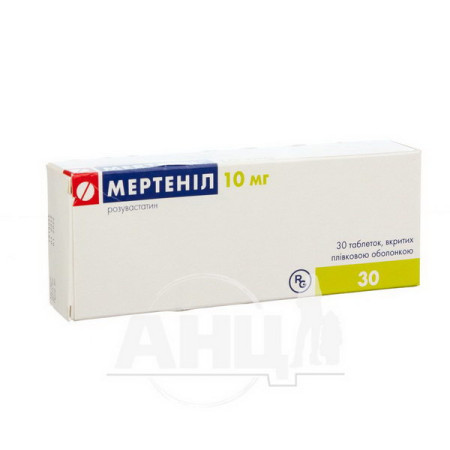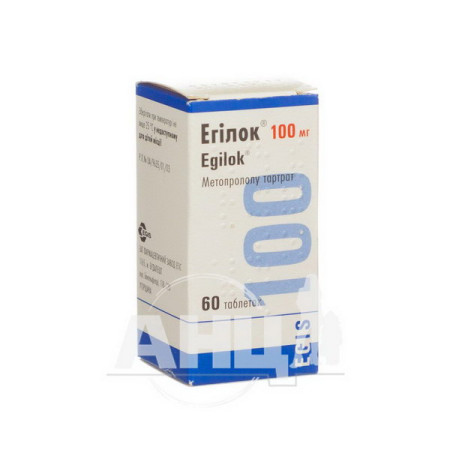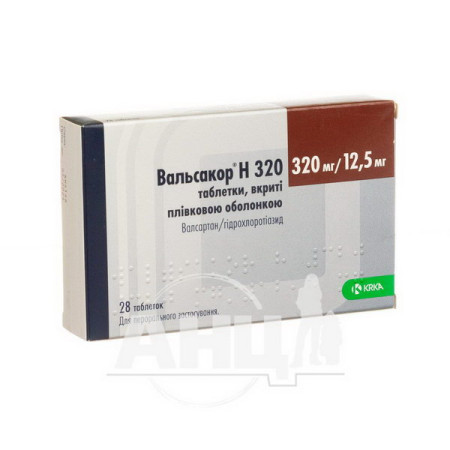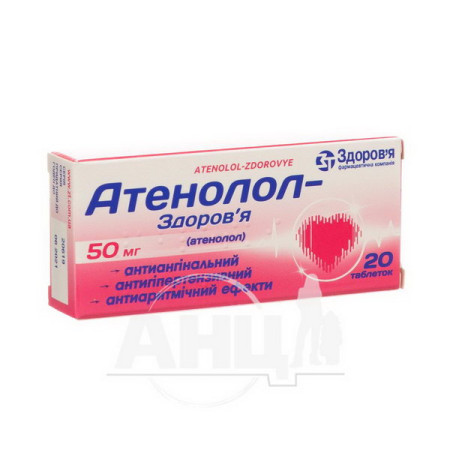Ezatro film-coated tablets 10 mg/10 mg blister No. 30
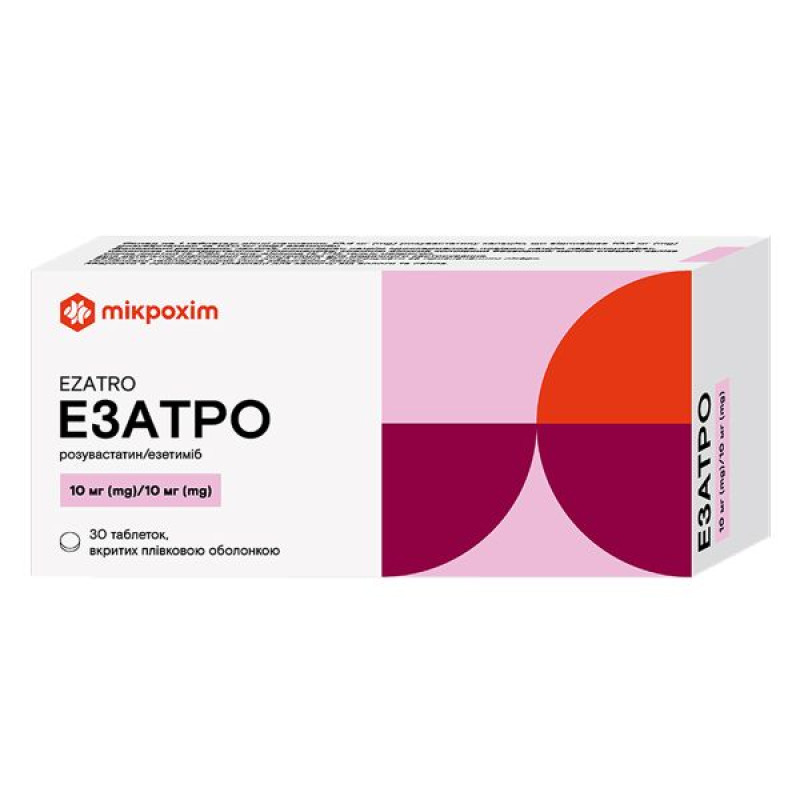
Instructions Ezatro film-coated tablets 10 mg/10 mg blister No. 30
Composition
active ingredients: rosuvastatin and ezetimibe;
- 1 film-coated tablet contains:
10 mg/10 mg: 10.4 mg of rosuvastatin calcium, equivalent to 10.0 mg of rosuvastatin, and 10.0 mg of ezetimibe;
20 mg/10 mg: 20.8 mg of rosuvastatin calcium, equivalent to 20.0 mg of rosuvastatin, and 10.0 mg of ezetimibe;
- excipients:
10 mg/10 mg: lactose monohydrate; croscarmellose sodium; povidone; sodium lauryl sulfate; microcrystalline cellulose; hypromellose; colloidal anhydrous silica; magnesium stearate; tablet coating Opadry Beige (hypromellose; yellow iron oxide (E 172), titanium dioxide (E 171), talc, macrogol);
20 mg/10 mg: lactose monohydrate; croscarmellose sodium; povidone; sodium lauryl sulfate; microcrystalline cellulose; hypromellose; colloidal anhydrous silica; magnesium stearate; tablet coating Vivacoat Yellow (hypromellose; titanium dioxide (E 171); talc; macrogol; iron oxide yellow (E 172)).
Dosage form
Film-coated tablets.
Main physicochemical properties
10 mg/10 mg: beige, round, biconvex, film-coated tablets, debossed with “MR 4” on one side.
20 mg/10 mg: round, yellow, biconvex, film-coated tablets, embossed with “MR 3” on one side.
Pharmacotherapeutic group
Hypolipidemic agents, combinations. Combinations of different hypolipidemic agents. Rosuvastatin and ezetimibe. ATX code C10B A06.
Pharmacological properties
Pharmacodynamics.
Rosuvastatin
Mechanism of action
Rosuvastatin is a selective and competitive inhibitor of HMG-CoA reductase, the rate-limiting enzyme that converts 3-hydroxy-3-methylglutaryl coenzyme A to mevalonate, a precursor of cholesterol. The primary site of action of rosuvastatin is the liver, a target organ for lowering cholesterol levels.
Rosuvastatin increases the number of LDL receptors on the surface of liver cells, enhancing the uptake and catabolism of LDL, and inhibits hepatic synthesis of VLDL, thereby reducing the total number of VLDL and LDL particles.
Pharmacodynamic action
Rosuvastatin reduces elevated LDL-cholesterol, total cholesterol, and triglycerides and increases HDL-cholesterol levels. It also reduces apoB, non-HDL-C, VLDL-C, TG-VLDL, and increases apoA-I levels (Table 1). Rosuvastatin also reduces the LDL-C/HDL-C, total-C/HDL-C, non-HDL-C/HDL-C, and apoB/apoA-I ratios.
Table 1
Dose response in patients with primary hypercholesterolemia types IIa and IIb
(adjusted mean percentage change from baseline)
| Dose | N | LDL-C | Total cholesterol | HDL-C | TG | Non-HDL-C | apoV | apoA-I |
| Placebo | 13 | -7 | -5 | 3 | -3 | -7 | -3 | 0 |
| 5 | 17 | -45 | -33 | 13 | -35 | -44 | -38 | 4 |
| 10 | 17 | -52 | -36 | 14 | -10 | -48 | -42 | 4 |
| 20 | 17 | -55 | -40 | 8 | -23 | -51 | -46 | 5 |
| 40 | 18 | -63 | -46 | 10 | -28 | -60 | -54 | 0 |
The therapeutic effect is achieved within 1 week after the start of the drug, 90% of the maximum effect - after 2 weeks. The maximum effect is usually achieved after 4 weeks and is maintained thereafter.
Clinical efficacy and safety
Rosuvastatin is effective in the treatment of adults with hypercholesterolemia - with or without hypertriglyceridemia - regardless of race, sex, or age, as well as in the treatment of patients in special groups, such as patients with diabetes mellitus or patients with familial hypercholesterolemia.
In pooled phase III studies, rosuvastatin effectively reduced cholesterol levels in most patients with type IIa and IIb hypercholesterolemia (mean baseline LDL-C approximately 4.8 mmol/L) to the target values established by the recognized European Atherosclerosis Society (EAS; 1998); approximately 80% of patients taking the 10 mg dose achieved the EAS target LDL-C (<3 mmol/L).
In a large study, 435 patients with heterozygous familial hypercholesterolemia received rosuvastatin in doses ranging from 20 to 80 mg in an up-titration regimen. The drug showed beneficial effects on lipid parameters and achievement of target levels was observed at all doses. After titration to a daily dose of 40 mg (12 weeks of treatment), LDL-C decreased by 53%. In 33% of patients, normal LDL-C levels were achieved by EAS (< 3 mmol/L).
In an open-label, up-titration study, the response to rosuvastatin 20–40 mg was studied in 42 patients (including 8 children) with homozygous familial hypercholesterolemia. In the overall population, LDL-C levels were reduced by an average of 22%.
In a multicenter, double-blind, placebo-controlled clinical trial (METEOR), 984 patients aged 45–70 years with low risk of coronary heart disease (defined as Framingham risk < 10% over 10 years), a mean LDL-C of 4.0 mmol/L (154.5 mg/dL), but subclinical atherosclerosis (defined as increased carotid intima-media thickness (CIMT)) were randomized to receive either 40 mg rosuvastatin or placebo once daily for 2 years. Compared with placebo, rosuvastatin significantly slowed the progression of maximal CIMT at 12 carotid sites by -0.0145 mm/year [95% confidence interval -0.0196, -0.0093; p < 0.0001].
The change from baseline was -0.0014 mm/year (-0.12%/year (not statistically significant)) in the rosuvastatin group compared with a progression of +0.0131 mm/year (1.12%/year (p < 0.0001)) in the placebo group. No direct correlation between the reduction in TCIMSA and the reduction in the risk of cardiovascular events was demonstrated. The METEOR study enrolled patients with low risk of coronary heart disease, who are not representative of the target population for rosuvastatin 40 mg. The 40 mg dose should only be administered to patients with severe hypercholesterolemia and high risk of cardiovascular events (see section 4.2).
In the rosuvastatin interventional trial to justify the use of a statin as a primary prevention agent (JUPITER), the effect of rosuvastatin on the incidence of major atherosclerotic cardiovascular disease was evaluated in 17,802 men (≥ 50 years) and women (≥ 60 years).
Study participants were randomly assigned to placebo (n = 8901) or rosuvastatin 20 mg once daily (n = 8901) and were followed for an average of 2 years.
LDL-cholesterol concentrations decreased by 45% (p < 0.001) in the rosuvastatin group compared with the placebo group.
A post-hoc analysis of the high-risk subgroup of patients with a baseline Framingham score >20% (1558 participants) showed a significant reduction in the composite endpoint of cardiovascular death, stroke, and myocardial infarction (p = 0.028) in the rosuvastatin group compared with the placebo group. The absolute risk reduction for such events was 8.8 events per 1000 patient-years. The overall mortality rate remained unchanged in this high-risk group (p = 0.193). A post-hoc analysis of the high-risk subgroup (9302 participants in total) with a baseline SCORE score ≥ 5% (extrapolated to include participants over 65 years of age) showed a significant reduction in the composite endpoint of cardiovascular death, stroke, and myocardial infarction (p = 0.0003) in the rosuvastatin group compared with the placebo group. The absolute risk reduction, expressed as an event rate, was 5.1 events per 1000 patient-years. The overall mortality rate in this high-risk subgroup remained unchanged (p = 0.076).
In the JUPITER trial, 6.6% of rosuvastatin-treated patients and 6.2% of placebo-treated patients discontinued study drug due to adverse events. The most common adverse events leading to discontinuation were myalgia (0.3% rosuvastatin-treated patients, 0.2% placebo-treated patients), abdominal pain (0.03% rosuvastatin-treated patients, 0.02% placebo-treated patients), and rash (0.02% rosuvastatin-treated patients, 0.03% placebo-treated patients). The most common adverse events observed in the rosuvastatin group at a frequency greater than or equal to that observed in the placebo group were urinary tract infections (8.7% in the rosuvastatin group, 8.6% in the placebo group), nasopharyngitis (7.6% in the rosuvastatin group, 7.2% in the placebo group), back pain (7.6% in the rosuvastatin group, 6.9% in the placebo group), and myalgia (7.6% in the rosuvastatin group, 6.6% in the placebo group).
Children
In a double-blind, randomized, multicenter, placebo-controlled, 12-week study (n = 176, 97 male and 79 female participants) followed by a 40-week open-label rosuvastatin titration period (n = 173, 96 male and 77 female participants), patients aged 10–17 years (Tanner stages II–IV, girls who had started menstruating at least 1 year ago) with heterozygous familial hypercholesterolemia received rosuvastatin 5, 10, or 20 mg/day or placebo for 12 weeks, after which all participants received rosuvastatin daily for 40 weeks. At the beginning of the study, approximately 30% of patients were aged 10–13 years and approximately 17%, 18%, 40% and 25% of them were in Tanner stages II, III, IV and V, respectively.
LDL-C levels decreased by 38.3%, 44.6%, and 50.0%, respectively, in the rosuvastatin 5, 10, and 20 mg groups compared with 0.7% in the placebo group.
At the end of the 40-week open-label dose titration period to target (maximum dose was 20 mg once daily), 70 of 173 patients (40.5%) achieved a target LDL-C level of less than 2.8 mmol/L.
Rosuvastatin was also studied in a 2-year, open-label, target-titration study in 198 children with heterozygous familial hypercholesterolemia aged 6 to 17 years (88 males and 110 females, Tanner stage < II–V). The starting dose for all patients was 5 mg rosuvastatin once daily. Patients aged 6 to 9 years (n = 64) were titrated to a maximum dose of 10 mg once daily, and patients aged 10 to 17 years (n = 134) were titrated to a maximum dose of 20 mg once daily.
After 24 months of rosuvastatin treatment, the least squares mean reduction from baseline in LDL-C was -43% (baseline: 236 mg/dL, month 24: 133 mg/dL). For each age group, the least squares mean reduction from baseline in LDL-C was -43% (baseline: 234 mg/dL, month 24: 124 mg/dL), -45% (baseline: 234 mg/dL, month 24: 124 mg/dL), and -35% (baseline: 241 mg/dL, month 24: 153 mg/dL) in the age groups 6 to < 10, 10 to < 14, and 14 to < 18 years, respectively.
Rosuvastatin 5, 10, and 20 mg also resulted in statistically significant mean changes from baseline in the following secondary lipid and lipoprotein variables: HDL-C, total-C, non-HDL-C, LDL-C/HDL-C, total-C/HDL-C, TG/HDL-C, non-HDL-C/HDL-C, apoB, apoB/apoA-1. Each of these changes demonstrated improvements in lipid responses and were maintained over 2 years.
After 24 months of treatment, no effect on the patient's height, weight, BMI or sexual maturation was observed (see section "Special warnings and precautions for use").
A randomized, double-blind, placebo-controlled, multicenter, crossover study evaluated rosuvastatin 20 mg once daily versus placebo in 14 children and adolescents (aged 6 to 17 years) with homozygous familial hypercholesterolemia. The study included a 4-week active diet-based run-in phase during which patients received rosuvastatin 10 mg, a crossover phase consisting of a 6-week period of rosuvastatin 20 mg followed by 6 weeks of placebo, and a 12-week maintenance phase during which all patients received rosuvastatin 20 mg. Patients receiving ezetimibe or apheresis continued to receive this treatment throughout the study.
A statistically significant (p = 0.005) reduction in LDL-C (22.3%; 85.4 mg/dL, or 2.2 mmol/L) was observed after 6 weeks of treatment with rosuvastatin 20 mg compared with placebo. There were also statistically significant reductions in total-C (20.1%, p = 0.003), non-HDL-C (22.9%, p = 0.003), and apoB (17.1%, p = 0.024). Reductions in TG, LDL-C/HDL-C, total-C/HDL-C, non-HDL-C/HDL-C, and apoB/apoA-I were also observed after 6 weeks of treatment with rosuvastatin 20 mg compared with placebo. The reduction in LDL-C after 6 weeks of treatment with rosuvastatin 20 mg followed by 6 weeks of placebo was maintained through 12 weeks of continuous therapy. One patient had further reductions in LDL-C (8.0%), total-C (6.7%), and non-HDL-C (7.4%) after 6 weeks of treatment with dose titration to 40 mg.
During continuation of open-label treatment with rosuvastatin 20 mg, 9 of these patients maintained LDL-C reductions ranging from -12.1% to -21.3% for up to 90 weeks.
In an open-label, up-titration study in 7 evaluable children and adolescents (aged 8 to 17 years) with homozygous familial hypercholesterolemia (see above), the percentage reduction from baseline in LDL-C (21.0%), total-C (19.2%), and non-HDL-C (21.0%) after 6 weeks of treatment with rosuvastatin 20 mg was consistent with that observed in the aforementioned study in children and adolescents with homozygous familial hypercholesterolemia.
The European Medicines Agency has waived the obligation to submit the results of studies in all subsets of the paediatric population in the treatment of homozygous familial hypercholesterolemia, primary combined (mixed) dyslipidemia and for the prevention of cardiovascular events (see section 4.2 for information on paediatric use).
Ezetimibe
Mechanism of action
Ezetimibe is a member of a new class of lipid-lowering agents that selectively inhibit the intestinal absorption of cholesterol and related plant sterols. Ezetimibe is orally active and has a mechanism of action that is distinct from that of other classes of cholesterol-lowering drugs (e.g., statins, bile acid sequestrants (resins), acid derivatives of fibrates, and plant stanols). The molecular target of ezetimibe is the sterol transporter Niemann-Pick Cl-Like 1 (NPC1L1), which is responsible for the absorption of cholesterol and phytosterols in the intestine.
Ezetimibe localizes to the brush border of the small intestine and inhibits cholesterol absorption by reducing the delivery of intestinal cholesterol to the liver; statins reduce cholesterol synthesis in the liver, and together these mechanisms provide additional cholesterol reduction. After two weeks of clinical use in 18 patients with hypercholesterolemia, ezetimibe reduced cholesterol absorption by 54% compared with placebo.
A series of preclinical studies were conducted to determine the selectivity of ezetimibe for inhibiting cholesterol absorption. Ezetimibe inhibited the absorption of [14C]-cholesterol without affecting the absorption of triglycerides, fatty acids, bile acids, progesterone, ethinyl estradiol, or the fat-soluble vitamins A and D.
Epidemiological studies have established that cardiovascular morbidity and mortality vary directly with the level of total cholesterol and LDL-C and inversely with the level of HDL-C.
The use of ezetimibe with a statin effectively reduces the risk of cardiovascular events in patients with coronary heart disease and a history of acute coronary syndrome (ACS).
Clinical efficacy and safety
In controlled clinical trials, ezetimibe as monotherapy and when co-administered with a statin significantly reduced total cholesterol (total-C), low-density lipoprotein cholesterol (LDL-C), apolipoprotein B (Apo-B), and triglycerides (TG) and increased high-density lipoprotein cholesterol (HDL-C) in patients with hypercholesterolemia.
Primary hypercholesterolemia
In a double-blind, placebo-controlled, 8-week study, 769 patients with hypercholesterolemia already receiving statin monotherapy but whose LDL-C levels were not at the National Cholesterol Education Program (NCEP) target levels (2.6 to 4.1 mmol/L [100 to 160 mg/dL], depending on baseline characteristics), were randomized to receive ezetimibe 10 mg or placebo in addition to their current statin therapy.
Among patients receiving statins whose LDL-C levels were not at target at baseline (82%), significantly more individuals randomized to ezetimibe achieved target LDL-C levels at the study endpoint compared with those randomized to placebo, 72% and 19%, respectively.
Reductions in LDL-C were significantly different (25% and 4% with ezetimibe and placebo, respectively). In addition, ezetimibe added to current statin therapy significantly reduced total-C, Apo-B, TG, and increased LDL-C compared with placebo. Ezetimibe or placebo added to statin therapy reduced mean C-reactive protein by 10% and 0% from baseline, respectively.
In two double-blind, randomized, placebo-controlled, 12-week studies in 1719 patients with primary hypercholesterolemia, ezetimibe 10 mg significantly reduced total-C (13%), LDL-C (19%), Apo-B (14%), and TG (8%) and increased HDL-C (3%) compared with placebo. In addition, ezetimibe did not affect the concentrations of the fat-soluble vitamins A, D, and E, did not alter prothrombin time, and, like other lipid-lowering drugs, did not reduce adrenocortical steroid hormone production.
Children
In a multicenter, double-blind, controlled study of 138 patients
(59 boys and 79 girls) aged 6 to 10 years (mean age 8.3 years) with heterozygous familial or nonfamilial hypercholesterolemia (HeFH) and baseline LDL-C levels of 3.74–9.92 mmol/L were randomized to receive ezetimibe 10 mg or placebo for 12 weeks.
At week 12, ezetimibe significantly reduced total cholesterol (-21% vs. 0%), LDL-C (-28% vs. -1%), Apo-B (-22% vs. -1%), and HDL-C (-26% vs. 0%) compared with placebo. Results were similar for TG and HDL-C (-6% vs. +8% and +2% vs. +1%, respectively) between the two treatment groups.
Homozygous sitosterolemia (phytosterolemia)
In a double-blind, placebo-controlled, 8-week study, 37 patients with homozygous sitosterolemia were randomized to receive ezetimibe 10 mg (n = 30) or placebo (n = 7). Some patients were receiving other treatments (e.g., statins, resins). Ezetimibe significantly reduced the two major plant sterols, sitosterol and campesterol, by 21% and 24%, respectively, from baseline. The impact of sitosterol reduction on morbidity and mortality in this population is unknown.
Concomitant use of rosuvastatin and ezetimibe
Clinical efficacy
The aim of this 6-week, randomized, double-blind, parallel-group clinical trial was to evaluate the safety and efficacy of ezetimibe (10 mg) added to ongoing rosuvastatin therapy compared with escalating doses of rosuvastatin from 5 to 10 mg or 10 to 20 mg (n = 440). The pooled data demonstrated that ezetimibe added to ongoing rosuvastatin 5 mg or 10 mg reduced LDL-C by 21%. In contrast, doubling the dose of rosuvastatin to 10 mg or 20 mg reduced LDL-C by 5.7% (difference between groups 15.2%, p < 0.001).
A 6-week randomized trial was designed to investigate the efficacy and safety of rosuvastatin 40 mg alone and in combination with ezetimibe 10 mg in patients at high risk of coronary heart disease (n = 469). Significantly more patients in the rosuvastatin/ezetimibe group achieved the ATP III LDL-C goal (< 100 mg/dL, 94.0% vs. 79.1%, p < 0.001) than in the rosuvastatin monotherapy group. Rosuvastatin 40 mg was effective in improving the atherogenic lipid profile in this high-risk population.
In a randomized, open-label, 12-week study, the reduction in LDL-C was studied in each treatment group (rosuvastatin 10 mg/ezetimibe 10 mg, rosuvastatin 20 mg/ezetimibe 10 mg, simvastatin 40 mg/ezetimibe 10 mg, simvastatin 80 mg/ezetimibe 10 mg). In the low-dose rosuvastatin combination groups, the reduction from baseline was 59.7%, which was significantly greater than in the low-dose simvastatin combination groups (55.2% (p < 0.05)). In the high-dose rosuvastatin combination groups, LDL-C was reduced by 63.5% compared with 57.4% in the high-dose simvastatin combination groups (p < 0.001).
Pediatric patients
The European Medicines Agency has waived the obligation to submit the results of studies with the use of the medicine for cholesterol-lowering in all subsets of the paediatric population (see section 4.2 for information on paediatric use).
Pharmacokinetics.
Rosuvastatin
Absorption
The maximum concentration of rosuvastatin in plasma is reached approximately 5 hours after oral administration. Absolute bioavailability is approximately 20%.
Distribution
Rosuvastatin is extensively taken up by the liver, which is the main site of cholesterol synthesis and LDL-C clearance. The volume of distribution of rosuvastatin is approximately 134 L. About 90% of rosuvastatin is bound to plasma proteins, mainly albumin.
Metabolism
Rosuvastatin undergoes minor metabolism (approximately 10%). In vitro metabolism studies using human hepatocytes indicate that rosuvastatin is a poor substrate for metabolism by cytochrome P450 enzymes. The main isoenzyme involved is CYP2C9, with 2C19, 3A4 and 2D6 playing a somewhat smaller role. The main identified metabolites are the N-desmethyl and lactone metabolites. The N-desmethyl metabolite is approximately 50% less active than rosuvastatin, the lactone metabolite is considered clinically inactive. Rosuvastatin accounts for more than 90% of the circulating HMG-CoA reductase inhibitory activity.
Breeding
Approximately 90% of the rosuvastatin dose is excreted unchanged in the feces (absorbed and unabsorbed active substance together), the rest is excreted in the urine. Approximately 5% is excreted in the urine in unchanged form. The plasma half-life is approximately 19 hours and does not increase with increasing dose. The geometric mean clearance of the drug from blood plasma is approximately 50 l/h (coefficient of variation - 21.7%). As with other HMG-CoA reductase inhibitors, hepatic uptake of rosuvastatin occurs with the participation of the membrane transporter OATP-C, which plays an important role in the hepatic elimination of rosuvastatin.
Linearity
Systemic exposure to rosuvastatin increases in proportion to the dose. Pharmacokinetic parameters do not change with repeated daily administration.
Special patient groups
Age and gender
There was no clinically significant effect of age or gender on the pharmacokinetics of rosuvastatin in adults. The pharmacokinetics of rosuvastatin in children and adolescents with heterozygous familial hypercholesterolemia were similar to those in adult volunteers (see section "Children").
Race
Pharmacokinetic studies have shown that in patients of Mongoloid race (Japanese, Chinese, Filipinos, Vietnamese and Koreans) the median AUC and Cmax values are approximately twice as high as in Caucasians; in Indians the median AUC and Cmax values are increased by approximately 1.3 times. Population pharmacokinetic analysis has not revealed any clinically significant difference between Caucasian and Negroid patients.
Kidney dysfunction
In a study in patients with varying degrees of renal impairment, no changes in plasma concentrations of rosuvastatin or the N-desmethyl metabolite were observed in subjects with mild to moderate renal impairment. In patients with severe renal impairment (creatinine clearance < 30 ml/min), plasma concentrations of rosuvastatin were 3-fold higher and those of the N-desmethyl metabolite were 9-fold higher than in healthy volunteers. Steady-state plasma concentrations of rosuvastatin in patients on hemodialysis were approximately 50% higher than in healthy volunteers.
Liver dysfunction
In a study of patients with varying degrees of hepatic impairment, no evidence of increased exposure to rosuvastatin was observed in patients with Child-Pugh scores of 7 or less. However, two patients with Child-Pugh scores of 8 and 9 had systemic exposures at least twice that of patients with lower scores. There is no experience with rosuvastatin in patients with Child-Pugh scores greater than 9.
The distribution of HMG-CoA reductase inhibitors, including rosuvastatin, occurs with the participation of transport proteins OATP1B1 and BCRP. Patients with genetic polymorphisms of SLCO1B1 (OATP1B1) and/or ABCG2 (BCRP) are at risk of increased exposure to rosuvastatin. With certain forms of the SLCO1B1 p.521CC and ABCG2 p.421AA polymorphisms, rosuvastatin exposure (AUC) is increased compared with the SLCO1B1 p.521TT or ABCG2 p.421CC genotypes. Specific genotyping is not provided in clinical practice, but patients with such polymorphisms are recommended to use a lower daily dose of rosuvastatin.
Children
Two studies of the pharmacokinetics of rosuvastatin (tablet formulation) in children with heterozygous familial hypercholesterolemia aged 10 to 17 years or 6 to 17 years (total of 214 patients) showed that the drug exposure in children was lower or similar to that in adult patients. The exposure of rosuvastatin was predictable according to the dose and duration of administration over 2 years of observation.
Ezetimibe
Absorption
After oral administration, ezetimibe is rapidly absorbed and extensively conjugated to form a pharmacologically active phenolic glucuronide (ezetimibe-glucuronide). The mean maximum plasma concentration (Cmax) of ezetimibe-glucuronide is reached after 1–2 hours, and of ezetimibe after 4–12 hours. The absolute bioavailability of ezetimibe cannot be determined because the compound is insoluble in aqueous solutions suitable for injection.
Concomitant food intake (low or high fat) does not affect the oral bioavailability of ezetimibe. Ezetimibe can be taken without regard to meals.
Distribution
Ezetimibe and ezetimibe-glucuronide bind to human plasma proteins at
99.7% and 88–92%, respectively.
Metabolism
The primary metabolism of ezetimibe occurs in the small intestine and liver by conjugation with glucuronide (phase II reaction) with subsequent excretion in the bile. Minimal oxidative metabolism (phase I reaction) was observed at all stages of transformation. Ezetimibe and ezetimibe-glucuronide are the main substances determined in blood plasma and constitute approximately 10-20% and 80-90% of the total plasma content of the drug, respectively. Ezetimibe and ezetimibe-glucuronide are slowly eliminated from blood plasma by enterohepatic recirculation. The half-life of ezetimibe and ezetimibe-glucuronide is approximately 22 hours.
Breeding
Following oral administration of 20 mg of 14C-ezetimibe to volunteers, approximately 93% of the total ezetimibe radioactivity in plasma was recovered. Approximately 78% and 11% of the administered radioactive dose were excreted in the feces and urine, respectively, within 10 days. No trace of radioactivity was detected in plasma after 48 hours.
Special patient groups
Children
The pharmacokinetics of ezetimibe are similar in children aged 6 years and older and in adults. There are no pharmacokinetic data in children under 6 years of age. Clinical experience in children and adolescents includes patients with GoSG, GeSG, or sitosterolemia.
Elderly patients
In elderly patients (over 65 years of age), plasma concentrations of total ezetimibe are approximately twice as high as in younger patients (18–45 years of age). The LDL-C reduction and safety profile are approximately the same in elderly and younger patients taking ezetimibe. Therefore, no dose adjustment is necessary for elderly patients.
Liver failure
Following a single dose of 10 mg ezetimibe, the mean area under the concentration-time curve (AUC) of total ezetimibe was 1.7-fold higher in patients with mild hepatic impairment (Child-Pugh score 5-6) than in healthy volunteers. In a 14-day multiple-dose study of ezetimibe (10 mg daily) in patients with moderate hepatic impairment, the AUC was 1.7-fold higher.
(Child-Pugh score 7-9) AUC of total ezetimibe increased approximately 4-fold on days 1 and 14 compared with healthy volunteers. No dose adjustment is required for patients with mild hepatic impairment. Since the effects of increased ezetimibe levels in patients with moderate or severe hepatic impairment (Child-Pugh score greater than 9) are unknown, ezetimibe is not recommended for use in this patient population (see section 4.4).
Kidney failure
Following a single dose of 10 mg ezetimibe in patients with severe renal impairment (n = 8; creatinine clearance ≤ 30 mL/min/1.73 m2), the mean AUC of total ezetimibe increased approximately 1.5-fold compared to healthy volunteers (n = 9). This finding is not considered clinically significant. No dose adjustment is necessary for patients with renal impairment.
In one patient in this study (who had a kidney transplant and was receiving multitherapy, including cyclosporine), total ezetimibe levels were 12-fold higher.
Sex
Plasma concentrations of total ezetimibe are slightly higher (approximately 20%) in women than in men. The LDL-C lowering and safety profile are approximately the same in men and women taking ezetimibe. Therefore, no dose adjustment is necessary based on the patient's gender.
Indication
Adults with primary hypercholesterolemia (type IIa, including heterozygous familial hypercholesterolemia) or mixed dyslipidemia (type IIb) in whom adequate control of the disease is achieved with the simultaneous use of rosuvastatin and ezetimibe as monocomponent drugs at the same doses as in the combination drug.
Prevention of cardiovascular diseases
The drug is indicated for replacement therapy in adult patients whose condition is adequately controlled with concomitant use of rosuvastatin and ezetimibe as separate drugs at the same doses as in the combined drug, in order to reduce the risk of developing cardiovascular diseases in patients with ischemic heart disease (IHD) and a history of acute coronary syndrome (ACS).
Contraindication
EZATRO is contraindicated:
– patients with hypersensitivity to the active substances (rosuvastatin, ezetimibe) or any of the excipients of the medicinal product;
– patients with active liver disease, including persistent elevations of serum transaminases of unknown etiology and any elevations of serum transaminases greater than 3 times the upper limit of normal (ULN);
– patients with severe renal impairment (creatinine clearance < 30 ml/min);
– patients with myopathy;
– patients who were simultaneously receiving the combination of sofosbuvir/velpatasvir/voxilaprevir (see section “Interaction with other medicinal products and other types of interactions”);
– patients who are simultaneously receiving cyclosporine;
– during pregnancy and breastfeeding, as well as women of reproductive age who do not use adequate contraception;
– to children.
Interaction with other medicinal products and other types of interactions
Associated with rosuvastatin
Effect of concomitant medications on rosuvastatin
Transporter protein inhibitors. Rosuvastatin is a substrate for several transporter proteins, including the hepatic uptake transporter OATP1B1 and the efflux transporter BCRP. Concomitant use of rosuvastatin with medicinal products that inhibit these transporter proteins may lead to increased plasma concentrations of rosuvastatin and an increased risk of myopathy (see sections 4.2, 4.4, and 4.5).
Cyclosporine: During concomitant use of rosuvastatin and cyclosporine, rosuvastatin AUC values were on average approximately 7-fold higher than those observed in healthy volunteers (see Table 2). EZATRO is contraindicated in patients receiving concomitant cyclosporine (see section 4.3).
Concomitant use did not affect the plasma concentrations of cyclosporine.
Protease inhibitors. Although the exact mechanism of interaction is unknown, concomitant use of protease inhibitors may significantly increase rosuvastatin exposure (see Table 2). For example, in a pharmacokinetic study, co-administration of 10 mg of rosuvastatin and a combination product containing two protease inhibitors (300 mg atazanavir/100 mg ritonavir) in healthy volunteers was accompanied by an increase in rosuvastatin AUC and Cmax by approximately 3- and 7-fold, respectively. Concomitant use of rosuvastatin and some combinations of protease inhibitors is possible after careful consideration of rosuvastatin dose adjustment due to the expected increase in rosuvastatin exposure (see sections “Method of administration and dosage”, “Special instructions for use”, “Interaction with other medicinal products and other forms of interaction”, Table 2).
Gemfibrozil and other lipid-lowering agents: Concomitant use of rosuvastatin and gemfibrozil resulted in a 2-fold increase in rosuvastatin AUC and Cmax (see section 4.4).
Given the data of special studies, pharmacokinetically significant interaction with phen
There are no reviews for this product.
There are no reviews for this product, be the first to leave your review.
No questions about this product, be the first and ask your question.

